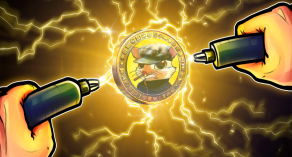Rethinking task-to-earn ecosystems with AI and smarter analytics in the context of something like SugarG Token could be a powerful way to enhance the way tasks are completed and rewarded in a decentralized environment. Let’s break it down and explore how this can be achieved:
Rethinking task-to-earn ecosystems with AI and smarter analytics in the context of something like SugarG Token could be a powerful way to enhance the way tasks are completed and rewarded in a decentralized environment. Let’s break it down and explore how this can be achieved:
1. Task-to-Earn Model:
The task-to-earn ecosystem refers to a decentralized system where users are rewarded with tokens for completing tasks. Traditionally, these tasks could range from simple actions like surveys or microtasks to more complex work like freelance gigs. With SugarG Token, this ecosystem could be optimized to leverage AI and smarter analytics to improve both the quality and efficiency of the tasks being completed.
- Incentive Mechanism: With SugarG Token, users are rewarded in tokens for their contribution. By integrating AI, the system could ensure that tasks are more personalized, matching the right person to the right task based on their skills, preferences, and past performance.
- Smart Contracts: Using blockchain technology, tasks can be governed by smart contracts that ensure transparency and automatic execution when conditions are met. AI could be used to predict outcomes and fine-tune these contracts for more intelligent task matching and dynamic reward distribution.
2. AI-Powered Task Matching:
AI can help match users to tasks in a more efficient and targeted way:
- Predictive Analytics: AI could predict which tasks are likely to be more engaging or successful for an individual based on their history and behavior within the system. This reduces wasted time and ensures higher quality task completion.
- Skill Assessment: By analyzing a user’s previous tasks and performance, AI could assess their skill level and recommend tasks that would most benefit both the user and the ecosystem.
This kind of intelligent matchmaking increases the overall productivity of the task-to-earn system while enhancing user satisfaction, because users are more likely to engage with tasks that are suited to their expertise or interests.
3. Smarter Analytics for Optimizing Task Execution:
- Task Analytics: Smarter analytics can identify patterns in how tasks are performed across different demographics, locations, or industries. This could be used to improve how tasks are structured and optimize reward allocation. For example, if a specific task is more efficiently completed by a certain group of users, the system can learn from this and automatically adjust the task distribution.
- User Behavior Analysis: AI and analytics could be used to understand how users engage with tasks and reward mechanisms. It could reveal user preferences, engagement times, and the most effective incentive structures, helping to fine-tune the system for maximum efficiency.
4. Enhanced Trust and Security with Blockchain:
- Transparent Reward System: Since SugarG Token is based on blockchain technology, it ensures that the reward distribution process is transparent and immutable. AI can verify that rewards are being allocated fairly and accurately based on performance data.
- Decentralized Verification: With AI-powered mechanisms, tasks can be verified for quality, eliminating fraud or errors in the system. For example, AI could analyze the content of a task or interaction to ensure it meets quality standards before the token reward is released.
5. Decentralized Governance and Community Engagement:
- AI-Driven Governance: AI can be used to help facilitate a decentralized governance model where the community members (token holders) vote on important decisions. Smarter analytics could highlight voting patterns and recommend actions for the system to remain fair and efficient.
- Incentive Customization: By leveraging data, the ecosystem could allow users to set their own reward structures or task criteria within certain limits. This customizability improves user engagement and allows for a more flexible ecosystem.
6. AI for Continuous Improvement:
- Self-Learning System: By applying machine learning algorithms, the ecosystem can continue to learn from user interactions and performance. As it gathers more data, AI can continuously improve how tasks are allocated, how rewards are distributed, and how the overall system functions, resulting in a more optimized task-to-earn environment.
- Adaptive Rewards: With advanced analytics, SugarG Token can introduce dynamic reward systems where the rewards for a task can change based on demand, task complexity, or user performance. This helps ensure that users are always motivated and incentivized appropriately for their efforts.
7. AI-Enhanced User Experience (UX):
- Personalization: AI can personalize the user experience by providing tailored task recommendations based on previous activity, personal preferences, and performance metrics. This improves user satisfaction and ensures more engagement in the task-to-earn process.
- Gamification: AI can also introduce elements of gamification, adapting rewards, milestones, and challenges based on the user's activity and performance to maintain high levels of engagement over time.
Conclusion:
By combining AI and blockchain technology with a task-to-earn ecosystem like SugarG Token, we can create a more efficient, transparent, and rewarding environment for users. Smarter analytics ensure that both the system and the participants can continuously improve their interactions, increasing the overall value of the token and enhancing the user experience. With AI, the system becomes smarter and self-sustaining, learning from data to create more personalized and optimized workflows, while blockchain ensures that everything is secure, transparent, and fair.
